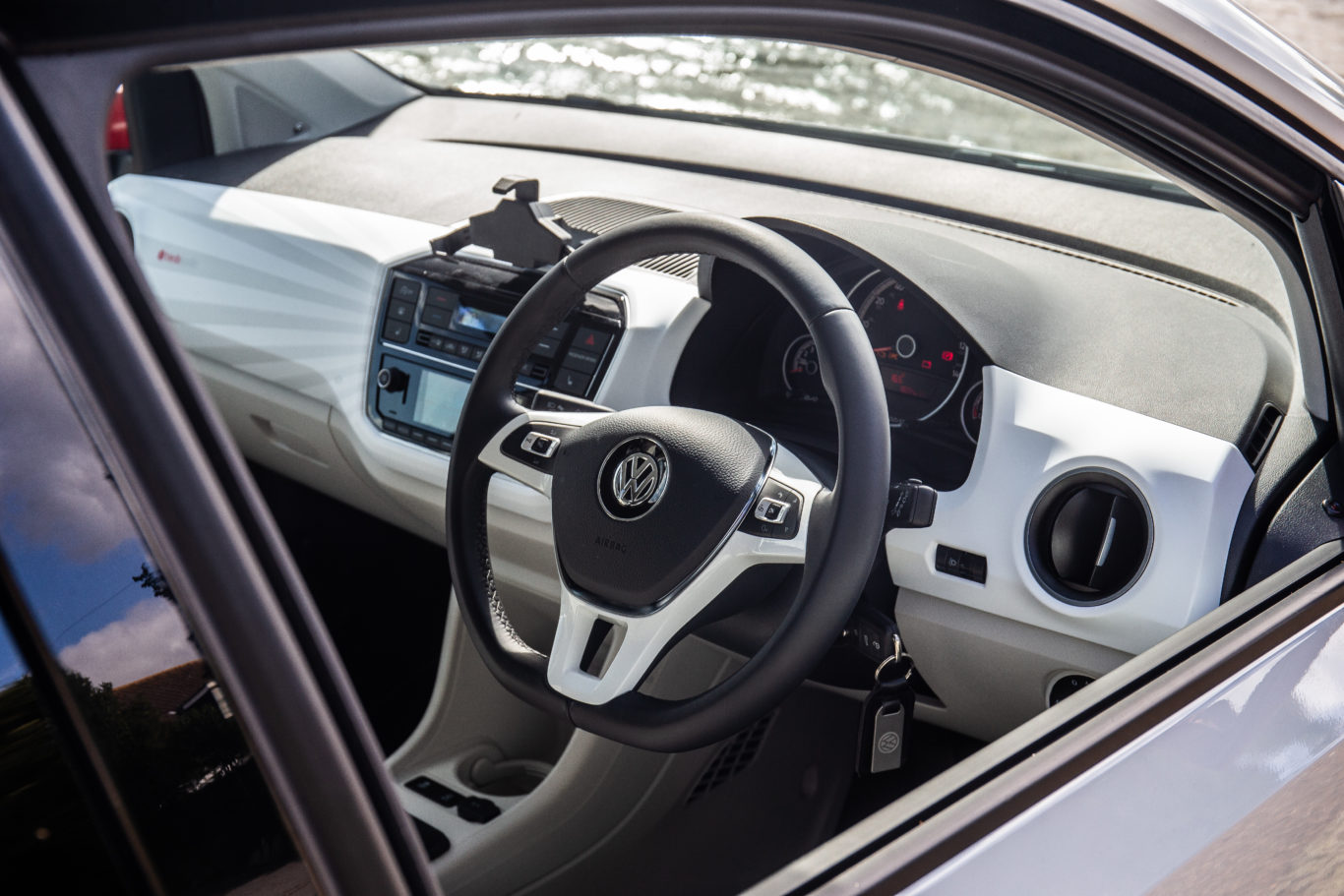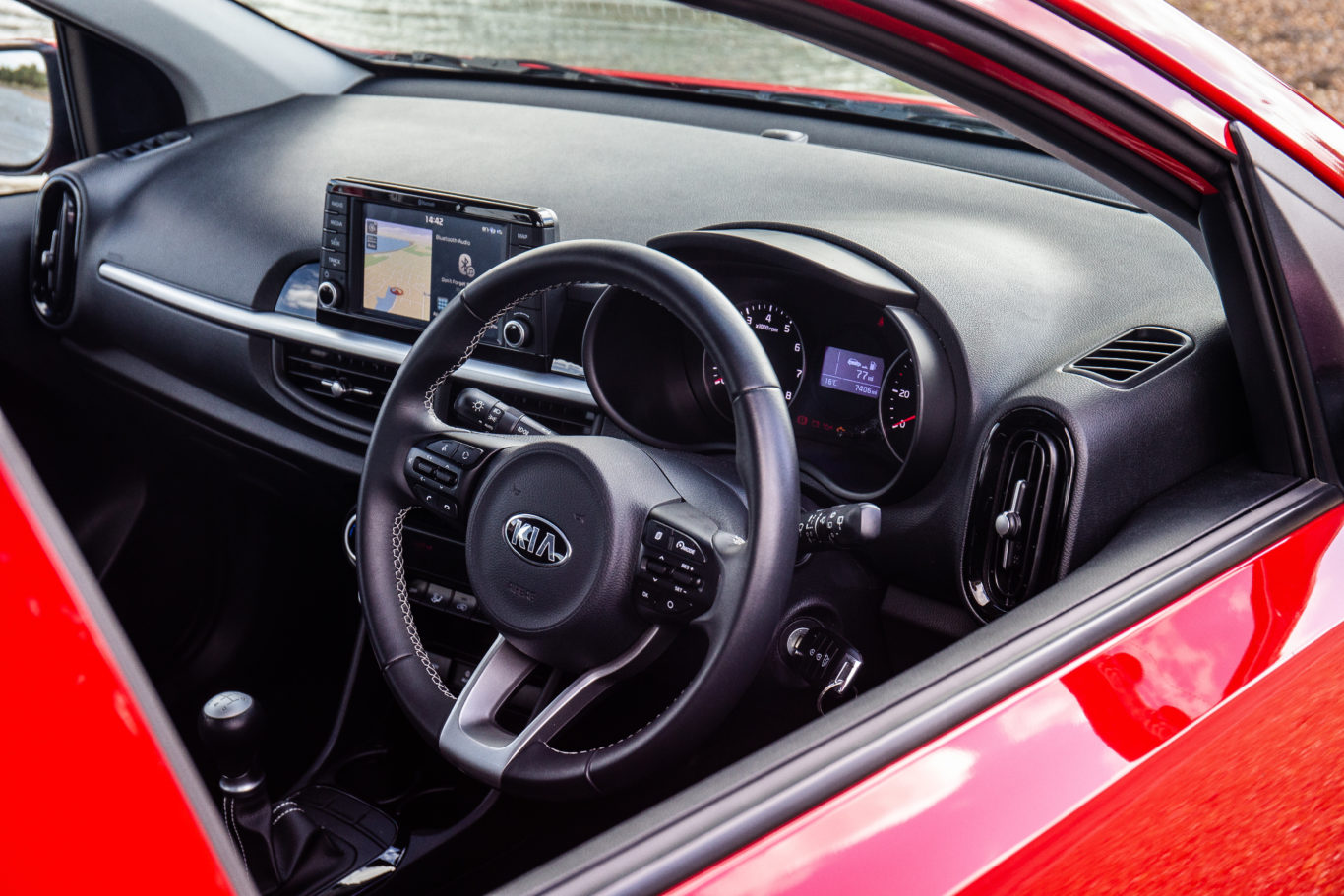Twin Test: Kia Picanto v Volkswagen Up!
It’s the battle of the city cars as the Volkswagen Up! takes on Kia’s Picanto. Jack Evans finds out which one is best

There’s still a place for the humble city car, despite the ever-increasing dominance of the crossover. With compact footprints, small turning circles and low running costs, a city car can make a lot of sense for urban drivers, though they’re often just as much at home out on the open roads too. Here, we’re testing out two key competitors – the Volkswagen Up! and the Kia Picanto – to see which one is best.
What are they?
These two compact rivals sit on opposite ends of the city car spectrum. There’s the Volkswagen Up!, which pitches at the more premium end of the segment, while the Picanto has always been a key budget offering from Kia.

They do both tick some key boxes, though. They’re compact, and therefore easy to park in the tightest of spaces. They both offer reasonable levels of interior space despite their dinky proportions, and both utilise efficient yet reasonably punchy engines. The way they are delivered, however, is quite different – showcasing the diversity within the city car segment.
What’s new?
Let’s start with the Volkswagen. This specific Up! is a Beats specification car, meaning it’s all about additional audio enjoyment. As part of that package you get a six-speaker sound system, accompanied by a subwoofer for even better in-car bass. There are a variety of Beats badges dotted around the interior and exterior of the cabin to remind you of the added musical prowess of the car, in case you happened to forget.

Then there’s the Picanto. Benefiting from Kia’s latest design, the smallest car in the South Korean manufacturer’s range is now sharper and sleeker than ever before – it’s more of a reflection of the other cars in Kia’s stable, that’s for sure.
What’s under the bonnet?
As mentioned, the Up! makes use of a turbocharged 1.0-litre three-cylinder petrol engine, which here produces 89bhp and a useful 160Nm of torque. With power sent to the front wheels via a five-speed gearbox, the Up! takes 9.7 seconds to crack 60mph, before reaching a top speed of 115mph. Economy is good at 64.2mpg combined, and emissions are decent too – the little Up! emits just 101g/km CO2.

The Picanto, meanwhile, utilises a larger, four-cylinder 1.25-litre petrol which, despite its size advantage over the Up’s unit produces less power at 83bhp. There’s less torque available too, at 122Nm. That’s due to the lack of a turbocharger. Again, the front wheels are driven with power sent through a five-speed manual ‘box, and Kia claims that the Picanto will return 54.3mpg combined, and emit 107g/km CO2 – figures which are, again, trumped somewhat by the Up’s.
What’s are they like to drive?
The Picanto’s driving characteristics are spot-on for the environment in which it has been designed for. The steering is light (though there’s slightly more feel to be found here than you’d expect), while the gearchange is easy, if a little vague. Incidentally the clutch pedal is also light, while the brakes provide more than enough stopping power. When pressing on the 1.25-litre engine becomes noticeably vocal, particularly when joining a motorway or building up to dual-carriageway speeds.

That isn’t an area where the Up! struggles. Thanks to its turbocharged nature, the 1.0-litre engine in the dinky Volkswagen is impressively flexible, dealing enough grunt for almost all occasions. It can feel a little breathy towards the top end of the rev-range, but this is to expected of such a small-capacity engine. The gearbox has a typically Volkswagen efficiency to it, while the steering is accurate and makes placing the car simple.
How do they look?
Both cars maximise their looks despite being rather pint-sized. The Up! may tread on the more conservative side of things, certainly, with its clean lines and wheels-on-all-four corners appearance contrasting the multitude of cuts and grooves that you’ll find on the Kia.
The Volkswagen also appears quite tall on the road, something the Picanto’s relatively raked front end design seems to mitigate.
What’s are they like inside?
Both the Kia and the Volkswagen do exceptionally well to deliver as much interior space as possible, despite being restricted by a considerably compact body size. The Up! feels the lighter and more spacious of the two, with the white plastics and matching dashboard trim really helping to lift the overall feel of the cabin.

It’s well-built too, with plenty of robustness and solidity to all of the materials used. The Picanto’s interior cabin by being just as solidly made – if not even a touch more – though the overall material quality is slightly lower.

Boot space is good with both; there’s 251 litres to be found in the Up! with the rear seats in place, though this is beaten ever so slightly by the Picanto’s 255-litre capacity.
What’s the spec like?
Our Picanto test car came in ‘3’ specification, which sits close to smack-bang in the middle of the range. For this you get 15-inch alloy wheels, tinted glass and full daytime running lights, among other touches. Inside, there’s a six-speaker sound system to make the most of, alongside a seven-inch touchscreen infotainment system housing Bluetooth connectivity and media functions. All in, our test car came to £12,975 – and this, of course, includes Kia’s excellent seven-year, 100,000-mile warranty.

The Up! comes in considerably over the Picanto in terms of price at £13,785 with options, though the Beats specification does add that six-speaker system (incidentally the same amount as you’ll find in the Kia), though supplemented by a digital sound processor for clearer audio. The infotainment screen is smaller and more geared towards being used alongside a smartphone, though you can still connect your phone via Bluetooth to the car’s system.
Verdict
It’s a close finish, this. The Picanto hits the nail on the head when it comes to cost, overall looks and equipment levels. It’s just pipped to the post by the Up! in key areas such as economy and emissions – as well as high-speed refinement. Though both cars are designed for the city, it’s the Up! which is more capable – able to go further afield without being too uncomfortable and it’s why, despite the additional cost, we’d be taking the Volkswagen keys on this occasion.





